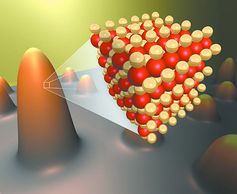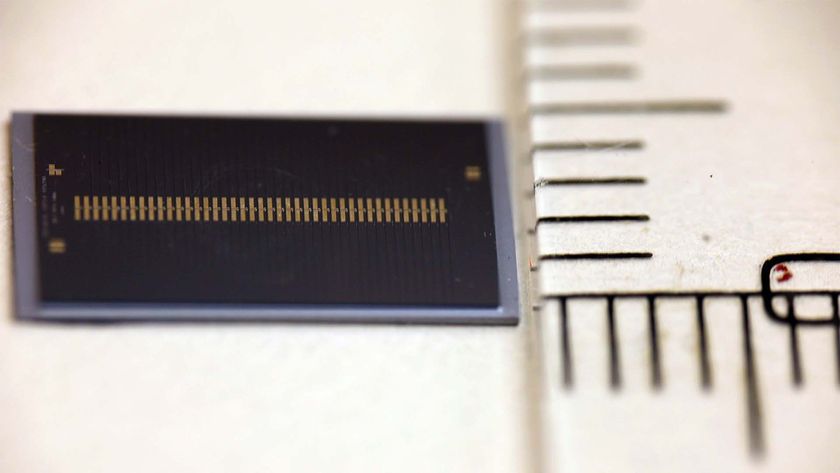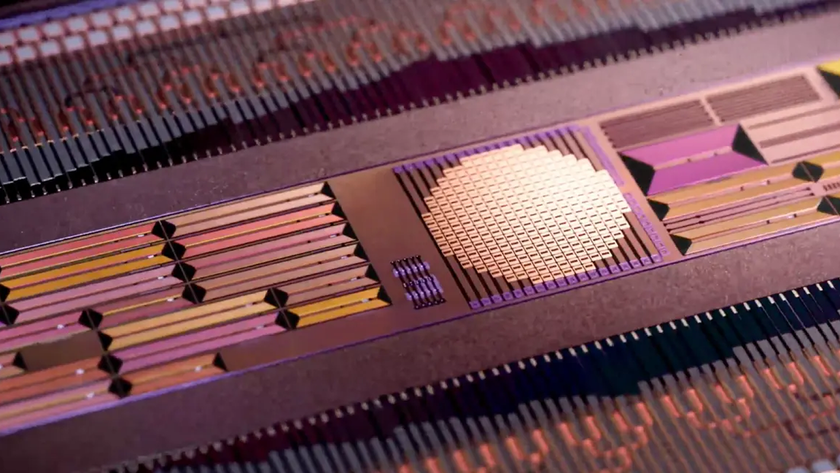
Peptide Power: The Science Behind the 30-second Phone Charger (Op-Ed)

This article was originally published at The Conversation. The publication contributed the article to Live Science's Expert Voices: Op-Ed & Insights.
If you’re one of the thousands of smartphone users experiencing battery drain, you’d have been pleased to read that Tel Aviv-based start-up StoreDot recently unveiled a prototype charger that fully charges a Samsung Galaxy 4 battery in around 30 seconds.
The unit – demonstrated at Microsoft’s Think Next conference in Tel Aviv – is the size of a small brick, but the company hopes it can produce and commercialise a more compact model by the end of 2016.
See for yourself here.
So what makes this prototype special – and how does it differ to what we use today? To get a good idea of its processes we need to look at it from a quantum perspective.
Lots of quantum dots
The new technology, which seems to be a brainchild of Gil Rosenman and colleagues at Tel Aviv University in Israel, is based on biological quantum dots.
A quantum dot is a tiny crystal that is typically made of a semiconductor material such as gallium arsenide, and is small enough (less than 10 nanometres) to exhibit quantum confinement effects (which allow the electronic and optical properties of quantum dots to be controllably tuned).
Sign up for the Live Science daily newsletter now
Get the world’s most fascinating discoveries delivered straight to your inbox.
The concept of using quantum dots for electronics is not new. In the past, electronic devices have focused on using inorganic quantum dots for transistor, solar cell, light emitting diode (LED) and diode laser technologies.

They are the building blocks of modern electronic devices, but these inorganic quantum dots are prepared using highly toxic components such as cadmium, zinc, sulphides and selenides.
Professor Rosenman’s group is working on bio-inspired self-assembly of biological, organic materials – peptides – to achieve the similar tasks as achieved by traditional inorganic semiconductors.
Going organic
Peptides are short chains of amino acids that play different roles in our body.
In nature, the controlled self-assembly of peptides and proteins is critical for us to perform different tasks. If those processes are disturbed, they can lead to uncontrolled aggregation of peptides which can cause various disorders such as Alzheimer’s disease.
Over the past decade, knowledge gained from nature has enabled scientists to fine-tune the self-assembly of peptides in the laboratory, so peptides can now be artificially modified to self-assemble in different conditions, and function outside a biological organism.
This has led to new applications of peptides in areas such as bio-nanomedicine, bio-nanotechnology, electronics, optics and energy storage.

StoreDot seems to have manipulated the chemistry of such peptides. This has allowed controllable self-assembly of two peptide molecules into an organic quantum dot of only two nanometres in size.
Since biomimetic self-assembly processes are highly specific, this may lead to an organic quantum dot manufacturing process with high yield and fewer imperfections in the final product.
It is critical to maintain a narrow size range of quantum dots in the final product. This is because different sized quantum dots act differently, but the current manufacturing protocols for inorganic quantum dots tend to suffer from such challenges.
Beyond chargers
It is clear that different biological semiconductors can be created to perform a myriad of tasks relevant to electronic devices. These include quick charging batteries and visible light emission for displays, on which StoreDot is currently concentrating.
It is not fully clear whether the rapid charging capacity shown by biological semiconductors makes use of the ferroelectricity (spontaneous electric polarisation), piezoelectricity (charge acquired through compression or distortion) and/or other properties of self-assembled peptides such as second harmonic generation (where two photons “combine” to create new photons with twice the energy).
Overall, the proof-of-concept demonstration to speed up charging times of current electronic devices is clearly remarkable.
Based on the crystallinity of the peptide-based quantum dots, StoreDot claims that they are stable over multiple cycles of charging – but bio-molecules such as peptides are prone to degrade under standard operating conditions.
Only time will tell whether such bio-based electronic devices will pass the rigorous stability tests expected by consumers across a range of environmental conditions.
Vipul Bansal receives funding from Australian Research Council through its Discovery, Linkage, and Linkage Infrastructure and Equipment Grant schemes.
This article was originally published on The Conversation. Read the original article. Follow all of the Expert Voices issues and debates — and become part of the discussion — on Facebook, Twitter and Google +. The views expressed are those of the author and do not necessarily reflect the views of the publisher. This version of the article was originally published on Live Science.












